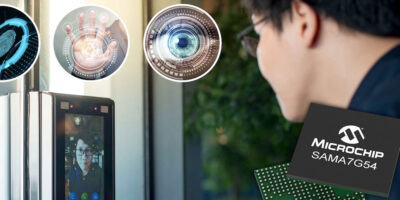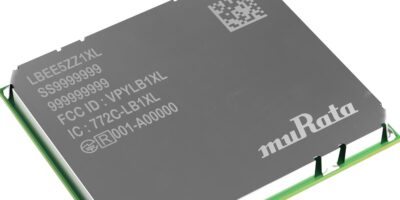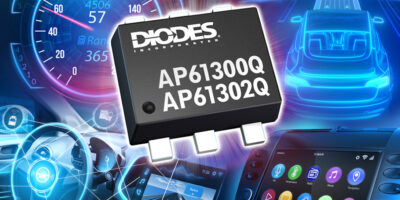Based on the Arm Cortex-A7 processor, the SAMA7G54 is Microchip’s latest microprocessor. It runs at up to 1GHz and includes both a MIPI CSI-2 camera interface and traditional parallel camera interface. This enables developers to design low-power stereo vision applications with more accurate depth perception, said Microchip.
It is expected to find a role in low power artificial intelligence (AI) installations which require advanced imaging and audio capabilities. According to Microchip these are typically found only on higher performing multi-core microprocessors that consume much more power. The Arm Cortex-A7-based SAMA7G54 brings low power operation into the 1GHz performance class of Linux-capable microprocessors by providing flexible low-power modes, as well as voltage and frequency scaling. When coupled with Microchip’s new MCP16502 power management IC (PMIC), the SAMA7G54 enables embedded designers to fine-tune the end application for the overall best power consumption vs. performance, while also optimizing for the lowest overall system cost, said the company. The MCP16502 is supported by Microchip’s mainline Linux distribution for the SAMA7G54, allowing for easy entry and exit from available low-power modes, as well as support for dynamic voltage and frequency scaling.
For audio applications, the microprocessor integrates enhanced audio features such as four I2S digital audio ports, an eight-microphone array interface, an S/PDIF transmitter and receiver, as well as a four stereo channel audio sample rate converter. It is also equipped with multiple microphone inputs for improved source localization to enhance smart speaker or video conferencing system performance.
It also integrates Arm TrustZone technology with secure boot, secure key storage and cryptography with acceleration. Customers can work with Microchip’s security experts to evaluate their security needs and implement the level of protection that’s right for their design.
“The SAMA7G54 provides a low-risk path for designers to develop power and performance optimised AI solutions for deployment at the edge,” said Rod Drake, vice president of Microchip’s 32-bit MPU business unit. “Designers can now create high-performing imaging and audio-centric AI applications without having to use multi-core MPUs with much higher power consumption.”
Microchip provides both hardware and software development support for the SAMA7G54. The SAMA7G54-EK evaluation kit features connectors and expansion headers for customisation. The device is supported by Microchip’s mainline Linux distribution. Bare-metal framework and RTOS support is provided within MPLAB Harmony v3.
Microchip provides a broad family of Ethernet PHYs, switches and hubs, wireless products, as well as CAN FD transceivers that are supported by the SAMA7G54.
The SAMA7G54 is available now in a BGA343 package.







